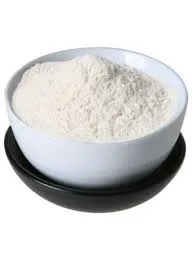
авг. . 18, 2024 05:22 Back to list
Current Trends and Price Analysis of Hydroxyethyl Cellulose in the Market
The Pricing Landscape of Hydroxyethyl Cellulose
Hydroxyethyl cellulose (HEC) is a widely utilized water-soluble polymer derived from cellulose through a chemical modification process. It has various applications across multiple industries, including pharmaceuticals, cosmetics, food, and construction. The versatility of HEC makes it an essential ingredient in formulations requiring thickening, stabilization, and moisture retention. Understanding the price dynamics of hydroxyethyl cellulose is crucial for manufacturers, formulators, and consumers alike, as it directly affects production costs, product formulations, and market competitiveness.
The Pricing Landscape of Hydroxyethyl Cellulose
Another critical factor influencing HEC pricing is demand. The growth of industries that utilize hydroxyethyl cellulose can significantly impact its market price. For instance, the cosmetics and personal care industry, which requires HEC for thickening agents in lotions and creams, has seen substantial growth in recent years. Similarly, the pharmaceutical sector demands HEC for drug formulation due to its biocompatibility and ability to enhance drug delivery systems. As consumer preferences shift toward natural and effective products, industries are likely to increase their demand for HEC, thereby affecting its price.
hydroxyethyl cellulose price

Market competition also plays a vital role in setting the price of hydroxyethyl cellulose. Numerous manufacturers compete in the HEC market, which can lead to price fluctuations based on supply and demand dynamics. Larger manufacturers with established supply chains may benefit from economies of scale, allowing them to offer HEC at competitive prices. Conversely, smaller manufacturers may struggle to compete, especially in a price-sensitive market. These market dynamics often create a competitive environment where prices can vary significantly among suppliers.
Furthermore, geographic factors can influence hydroxyethyl cellulose pricing. Regions with abundant raw materials and efficient manufacturing processes may offer HEC at lower prices. Conversely, in regions where import costs are high or where production capabilities are limited, prices may be elevated. Shipping costs, tariffs, and trade policies can also affect the final pricing of HEC, particularly in the global market, where manufacturers source materials and sell products across borders.
In recent years, the trend towards sustainable materials has also impacted the pricing of hydroxyethyl cellulose. As more companies aim to align with environmentally friendly practices, there is a growing demand for bio-based and sustainable alternatives in various applications. This shift may result in higher production costs for manufacturers who invest in sustainable sourcing, potentially leading to increased prices for consumers.
In conclusion, hydroxyethyl cellulose is a versatile polymer whose price is influenced by an interplay of raw material costs, demand from various industries, market competition, and geographic factors. As industries continue to evolve, understanding these dynamics will be crucial for stakeholders to navigate the pricing landscape effectively. For consumers and manufacturers alike, staying informed about market trends and price fluctuations will ensure a strategic approach to sourcing and utilizing hydroxyethyl cellulose in their products.
-
Unlocking the Benefits of HPMC Products: A Gateway to Versatile Applications
NewsAug.07,2025
-
Unleashing the Potential of HPMC Ashland: A Comprehensive Look
NewsAug.07,2025
-
Tile Bonding Cellulose: The Key to Superior Adhesion and Durability
NewsAug.07,2025
-
Hydroxypropyl Methylcellulose Powder: The Versatile Component in Modern Pharmaceuticals
NewsAug.07,2025
-
Hydroxyethyl Cellulose: The Versatile Solution for Various Industries
NewsAug.07,2025
-
Hydroxyethyl Cellulose (HEC): The Versatile Polymer for Various Applications
NewsAug.07,2025







